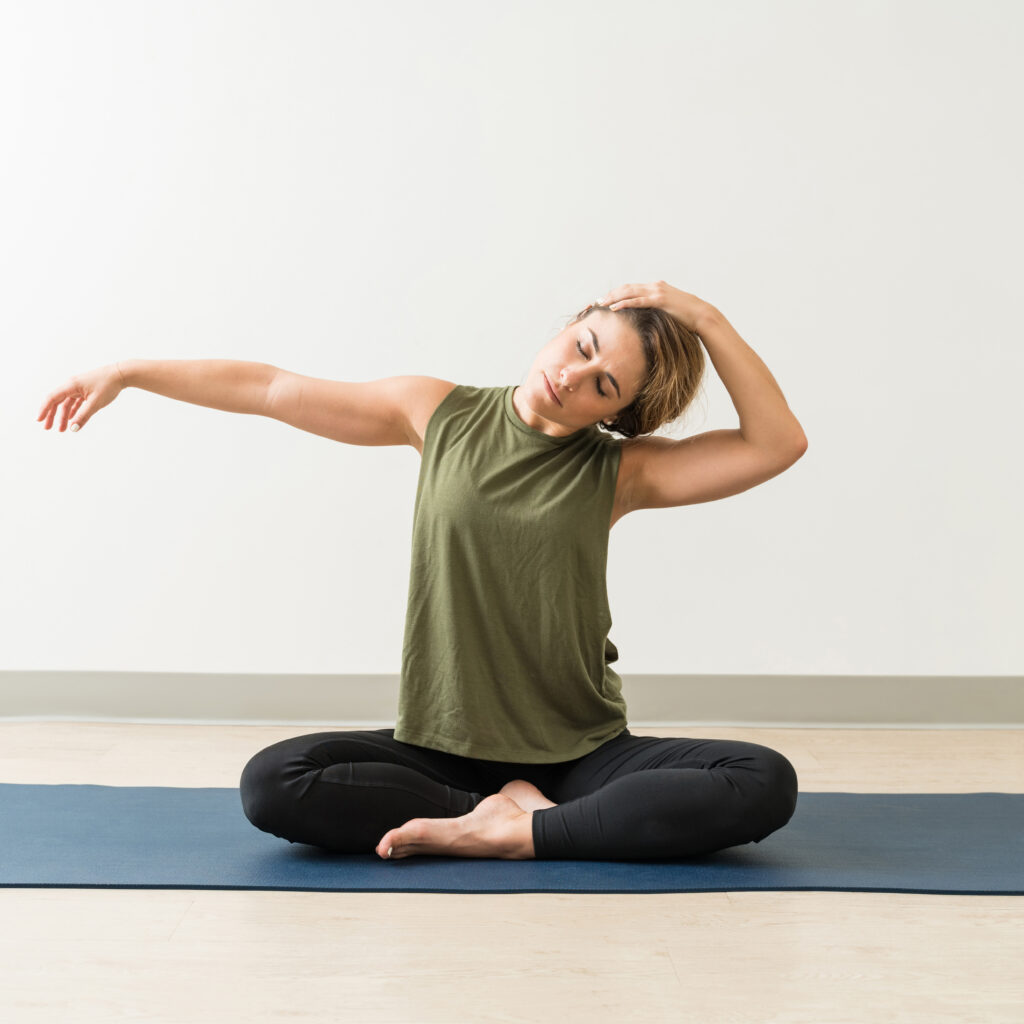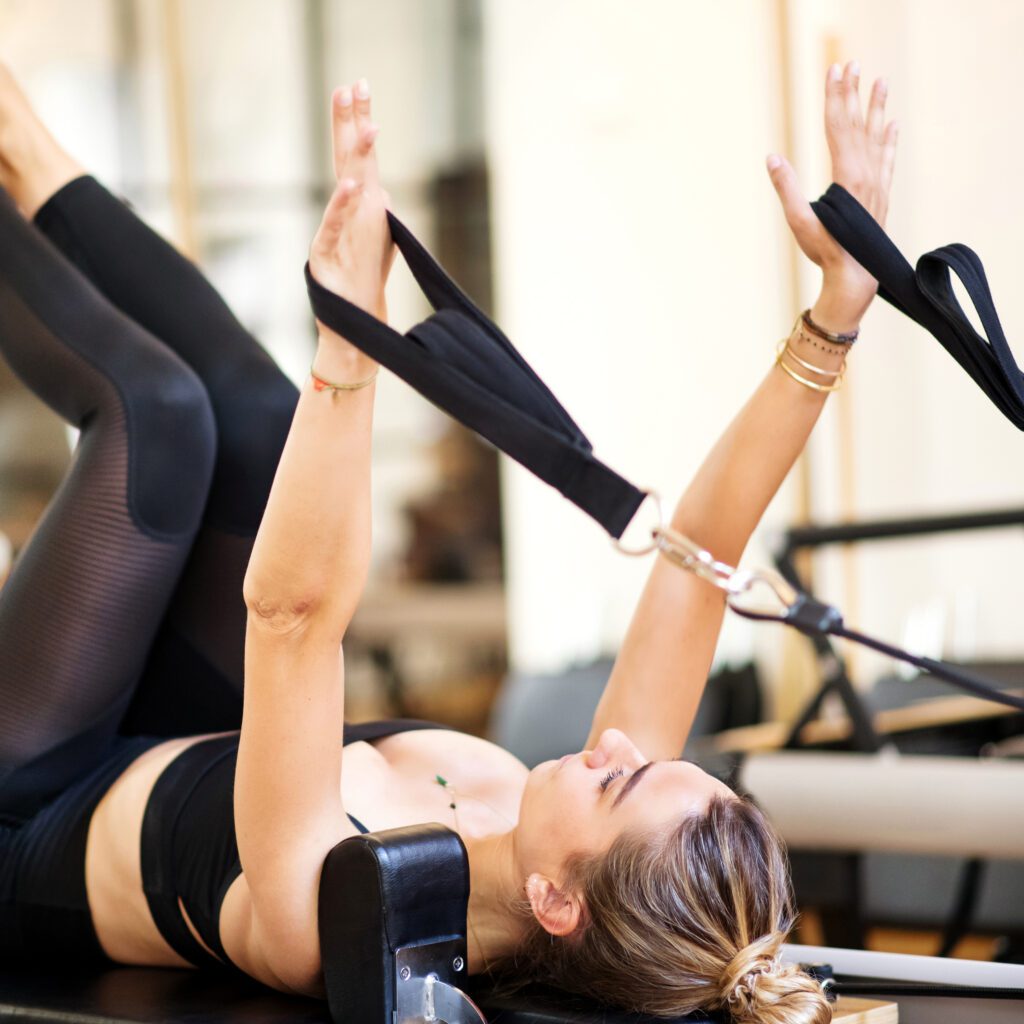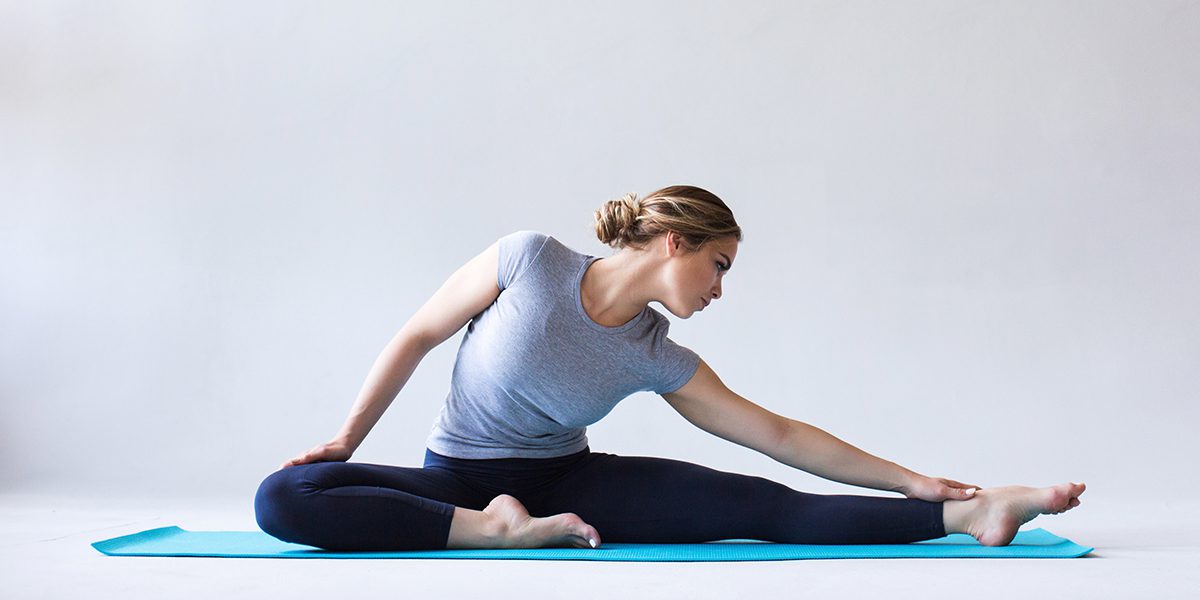WRITTEN BY WOODSIDE DIRECTOR OF TRAINING, JOHN BEANE
This month we’ll be discussing the role of flexibility and mobility training in enhancing performance and reducing the risk of injuries. While strength and endurance are often prioritized in fitness routines, it is crucial not to overlook the vital role that flexibility and mobility play in overall fitness and well-being. There is plenty of conflicting research on this topic so we will do our best to provide a filter so that you have a better understanding of what’s best for you. In this article, we will delve into the scientific foundations and mechanisms underlying flexibility and mobility training, discuss their benefits and provide practical recommendations to incorporate these training components into your program.

THE SCIENTIFIC FOUNDATIONS AND MECHANISMS OF FLEXIBILITY AND MOBILITY TRAINING
Flexibility refers to the range of motion in muscles and joints, while mobility encompasses the ability to move freely and efficiently through that range of motion. These training components are influenced by several factors, including muscle length, joint structure and the health of connective tissues. Engaging in regular flexibility and mobility exercises can improve these factors, leading to enhanced physical performance and a decreased risk of injuries. There are several contributing mechanisms to mobility and flexibility listed below. The mechanisms are the starting point to understanding the importance of incorporating flexibility and mobility into your program.
MECHANISMS
Muscle Elasticity: Muscle elasticity is a fundamental mechanism underlying human flexibility and mobility. It refers to the ability of muscles to stretch and return to their original length. This property is primarily attributed to the protein structures within muscle fibers, such as titin, actin and myosin. These proteins exhibit viscoelastic behavior, allowing muscles to withstand and dissipate mechanical forces during movement. The interaction between these proteins, along with the structural integrity of the extracellular matrix, influences the extensibility and recoil of muscles. Regular stretching exercises and conditioning programs can enhance muscle elasticity, leading to improved flexibility and mobility.
Joint Range of Motion: Joint range of motion (ROM) is a critical factor in human mobility. ROM is determined by the structural characteristics of the joints, including the shape of the articulating surfaces, the presence of cartilage and synovial fluid and the integrity of ligaments, tendons and capsules. Additionally, muscular strength and coordination play a role in optimizing joint ROM. Factors such as joint congruency, joint stability and the balance between agonist and antagonist muscle groups contribute to the overall mobility of a joint. Physical therapy interventions, exercise regimens and techniques like joint mobilization can target specific joints and optimize their range of motion.
Connective Tissue Flexibility: Connective tissues, such as tendons, ligaments and fascia, are essential components for maintaining joint stability and transmitting forces during movement. Their mechanical properties, including stiffness, viscoelasticity and plasticity, influence flexibility and mobility. Collagen, the primary structural protein in connective tissues, provides tensile strength and resistance to deformation. Collagen turnover and remodeling processes are influenced by factors such as age, hormonal changes, physical activity levels and tissue hydration. Stretching protocols, myofascial release techniques and manual therapies can target connective tissues to improve their flexibility and mobility.
Neural Control: Neural control mechanisms are crucial for coordinating and modulating movement patterns. The central nervous system (CNS) integrates sensory information and generates motor commands to activate specific muscles and produce desired movements. Neuromuscular adaptations, such as motor unit recruitment, firing rates and muscle fiber synchronization, play a significant role in flexibility and mobility. Proprioceptors, located in muscles, tendons and joints, provide feedback to the CNS about body position, joint angles and muscle tension. Enhancing neural control through motor learning, sensorimotor training and balance exercises can optimize flexibility and mobility.

Body Awareness and Proprioception: Body awareness and proprioception are intricate components of flexibility and mobility. Body awareness encompasses the conscious perception and understanding of one’s body position, movement and spatial orientation. Proprioception, on the other hand, is the subconscious ability to sense joint angles, muscle length and changes in body position without relying solely on visual feedback. These mechanisms rely on inputs from proprioceptors, vestibular system and somatosensory system. Activities that challenge balance, coordination and sensory integration (e.g., yoga, Pilates, tai chi) can enhance body awareness and proprioception, leading to improved flexibility and mobility.
Muscle Strength: Although flexibility focuses on the ability to stretch, muscle strength is equally important for optimal mobility. Strong muscles provide stability, support and control during movements, which is essential for functional mobility. Muscular strength is influenced by factors such as muscle fiber type composition, cross-sectional area, neural adaptations and muscle architecture. Resistance training, plyometric exercises and functional training can enhance muscle strength, leading to improved flexibility and mobility.
RECOMMENDATIONS FOR INCORPORATING FLEXIBILITY AND MOBILITY TRAINING
- Warm-up: Prior to flexibility and mobility exercises, it is helpful but not an absolute must, to warm up the body with low intensity cardio such as walking on an incline or cycling for 5-10 minutes.
- Comprehensive Stretching: Incorporate both static and dynamic stretching techniques into your routine. Static stretches involve holding a position to improve muscle flexibility, while dynamic stretches involve controlled movements to enhance joint mobility. Prioritize dynamic stretching before your session and static stretching after your session.
- Consider Yoga or Pilates: Yoga and Pilates are excellent practices for enhancing flexibility, mobility and body awareness.
- Foam Rolling and Self-Myofascial Release: Utilize foam rollers, massage guns or massage balls to target specific muscle groups and alleviate muscular tension. This self-massage technique can improve muscle flexibility and reduce muscle soreness in the short-term, ultimately leading to improved performance during physical activities. These techniques are meant to supplement manual therapy techniques which are still considered more ideal for treatment.
- Utilize the Technogym Anterior and Posterior Flexibility Equipment: Both the Technogym Anterior and Posterior Flexability pieces utilize The Selflex System, which is an innovative system developed by Technogym that allows the user to gently control the extent of muscle elongation via the gradual and proportional intervention of their weight. The Anterior and Posterior pieces also provide visual feedback so that progress can be tracked.
You can find the Technogym Flexability Anterior and Posterior equipment near the Stretching Mat in the South Club.

Flexibility and mobility training should not be overlooked in your fitness journey. Incorporating these training components can lead to a wider range of motion, injury prevention, improved posture and enhanced muscle activation. Remember to warm up before exercising, include comprehensive stretching exercises, and consider practices like yoga, Pilates, Massage and foam rolling to optimize your flexibility and mobility. As always, if you have any questions or would like to learn more about what’s been discussed in the blog, please feel free to contact us in the Training department.
Our Training team can help you incorporate a focus on mobility and flexibility into your workout routine. To learn more click here or email us.


